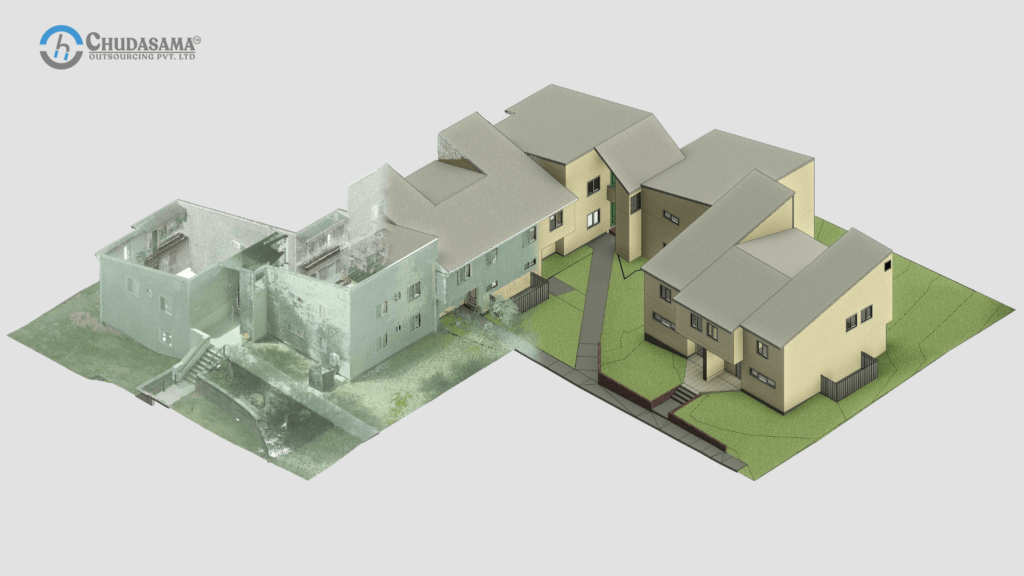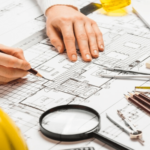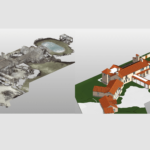Quick Summary: Scan to BIM is converting the building construction industry rapidly by changing the point cloud data into full BIM models. Find out the latest tips, solutions, and techniques in our guide above with the relevant information on the point cloud to BIM modeling services in 2024.
The architecture and construction sector today is under significant changes. New technologies are introduced more often than people can utilize them fully, thus influencing different stages of planning and production processes.
Digital reconstruction seemed to be the most progressive advancement in the direction of the correlation of the virtual and physical worlds, a process called Scan to BIM.
This comprehensive guide will take a deep look into the basis of Scan to BIM, list out its benefits, and also touch on its future in 2024 with milestones and trends like machine learning.
What is Scan to BIM?
Scan to BIM or Point Cloud to BIM Modeling is a cutting-edge process that involves a 3D scan of the physical world with the help of lasers and converting the resulting point cloud data into a Building Information Model (BIM). This method allows architects, construction engineers, and BIM professionals to produce digital models of actual structures with unmatched levels of accuracy and speed.
The Benefits of Point Cloud to BIM Modeling
Embracing Scan to BIM offers numerous advantages for professionals in the architecture and construction industry:
Enhanced Efficiency
Using the Scan to BIM software robots will automatically generate 3D models, thus cutting the time and effort needed for modeling, leaving more spare time for designers to engage in creativity.
Accuracy
Point cloud data has the capability of presenting the environment in a rather very robust and precise manner, therefore reducing human errors and ensuring that the BIM models do have an accurate representation of reality.
Cost-Effectiveness
BIM scanning robotized processes removed rework and diminished the need for manual measurements; BIM scanning thereby allowed cost savings in every phase of the project’s lifetime.
Improved Collaboration
The primary BIM model is a centralized and standardized data model that involves many partners so they can share and access the data without any barrier to coordination between the stakeholders.
Read also: Importance of Scan to BIM Modeling in AEC Industry
The Scan to BIM Process
The point cloud to BIM modeling process typically involves the following steps:
Data Capture
While up-to-date 3D scanning devices are used, professionals capture the existing environment with laser scanning tools. A cloud that has lots of points is created, which enables an exact representation of the space in all its details.
Data Processing
The raw point cloud data goes through a processing phase that involves cleaning, filtering, and registration, producing a 3-dimensional space that is to be used as a winner side.
BIM Modeling
By applying the BIM specialists’ tailored software to turn the point cloud into innovative engineering components, including walls, floors, and mechanical parts, BIM workers are able to generate a comprehensive and precise digital model.
Model Refinement
The BIM model receives the final touches, during which it is enriched with existing metadata, material properties, and other helpful details in order for it to be ready for various downstream uses.
Read also: How to Convert Point Cloud to 3D Model?
Technology and Tools for Scan to BIM
The success of the Scan to BIM process relies on a combination of cutting-edge hardware and software solutions:
3D Laser Scanners
Exactly what precision can be achieved by these tools used as point cloud capturing devices, including devices such as FARO, Leica, and Trimble scanners?
Point Cloud Processing Software
Data can be standardized through specialized filters, cleansers, and registrars like Autodesk ReCap and Leica Cyclone.
BIM Modeling Software
Software suites that allow users to generate intelligent BIM models from points data are standard; these include Autodesk Revit, Bentley MicroStation, and Graphisoft ArchiCAD.
Read also: How to Choose the Right Laser Scanning Technology for Your BIM Project?
Scan to BIM Trends in 2024
As we look ahead to 2024, several key trends are poise to shape the future of Scan to BIM in the architecture and construction industry:
Increased Adoption
The number of companies realizing the necessity of incorporating Scan into BIM is even higher, pushing it into their overall workflows as the requirement for an aligned BIM model is more rampant.
Advancements in AI and Machine Learning
The integration of artificial intelligence and machine learning algorithms in the point cloud to the BIM modeling process would result in more advanced automation and better efficiency because the machine will be delivering faster and more accurate results.
Cloud-Based Collaboration
The move to cloud-based environments” will allow for remote teams to collaborate well by simply sharing updates and data in real-time.
Integration with AR/VR
Combining Scan to BIM with augmented and virtual reality technologies will revolutionize the way BIM is view by design, enable more immersive visualization experiences for clients, and make their decisions more effective.
Best Practices and Tips for Optimizing Scan to BIM Workflows
To harness the full potential of Scan to BIM, consider the following best practices and tips:
Invest in High-Quality Equipment
These are cyber security risks that result from the use of outdated 3D laser scanning devices and software applications that may be unable to collect and process high-resolution point cloud data.
Plan Your Scanning Strategy
Aim as high as you can to avoid the occlusions, have adequate coverage, and maximize the efficiency of the scanned data.
Clear Project Goals
Give clients and stakeholders specific criteria for your Scan to BIM projects, and be sure that these are in line with their needs.
Collaborate with Experienced Professionals
Develop BIM offerings with BIM manpower for hire as well as point cloud to revit 3D bim modeling services to benefit from their knowledge and experience and make the projects succeed.
Continuously Educate and Train
Keep abreast with the current Scan to BIM technologies, methods, and approaches, as well as the most up-to-date good practices, by constantly attending education and training programs.
Conclusion
Scan to BIM is a change of generation in the way people approach architectural and construction projects detailing with great precision, causing economic benefits. With the technology and platform signature evolving and maturing, its adoption is very likely to speed up as well, so it will change the scene of the industry by 2024 and further.
Through the implementation of the scan to BIM and its introduction to the firm’s everyday workflows, the firm can be position at the front of innovation and deliver results beyond expectations. The range of expertise – be it an architect, construction professional, or Revit 3D bim modeling specialist – of properly mastering the skills of point cloud to BIM modeling will make a leaping difference in your career.
When you choose to take the transit shop scan to BIM, or you need technical help, simply contact one of our seasoned professionals at Chudasama Outsourcing for expert assistance.
We are the only company that provides a selection of modern point cloud to BIM services specifically tailored to your specific project needs. Using Scan and BIM together can help you achieve the full potential of the software and change the way you approach architecture and construction projects.




